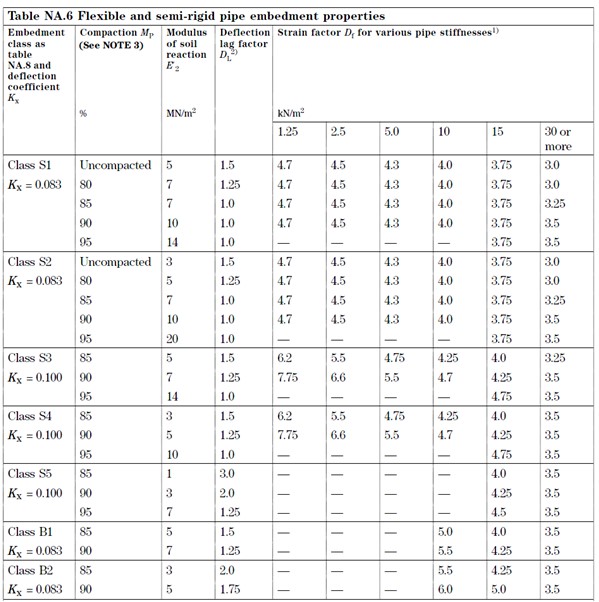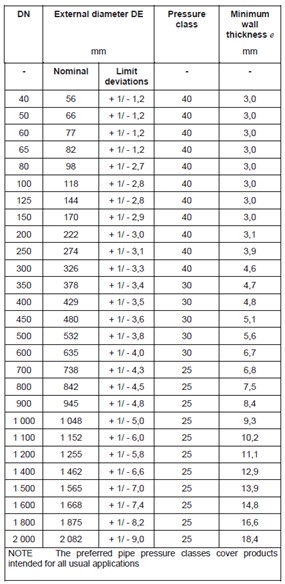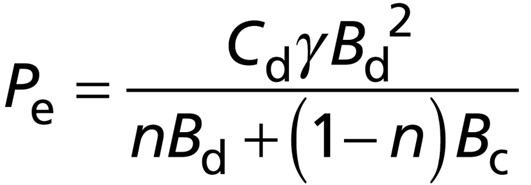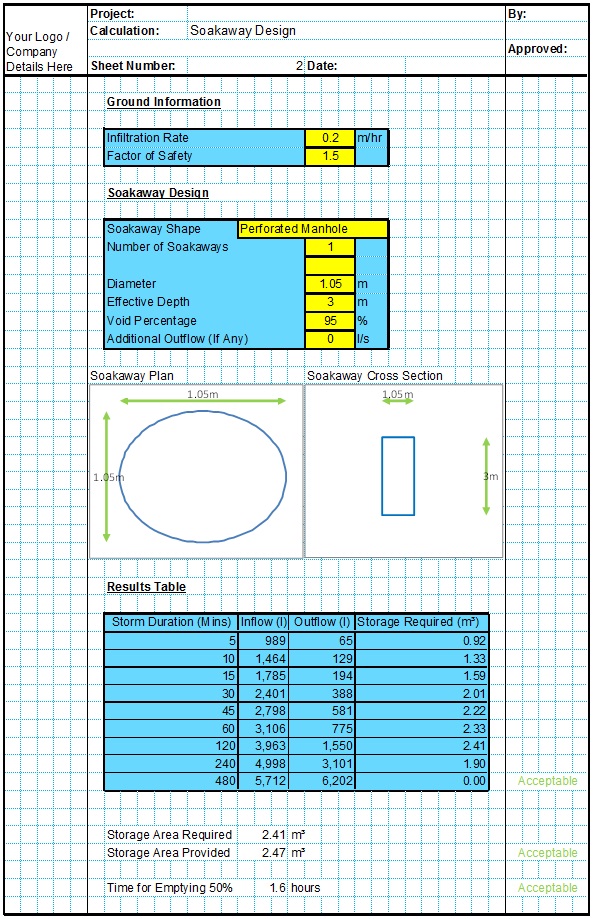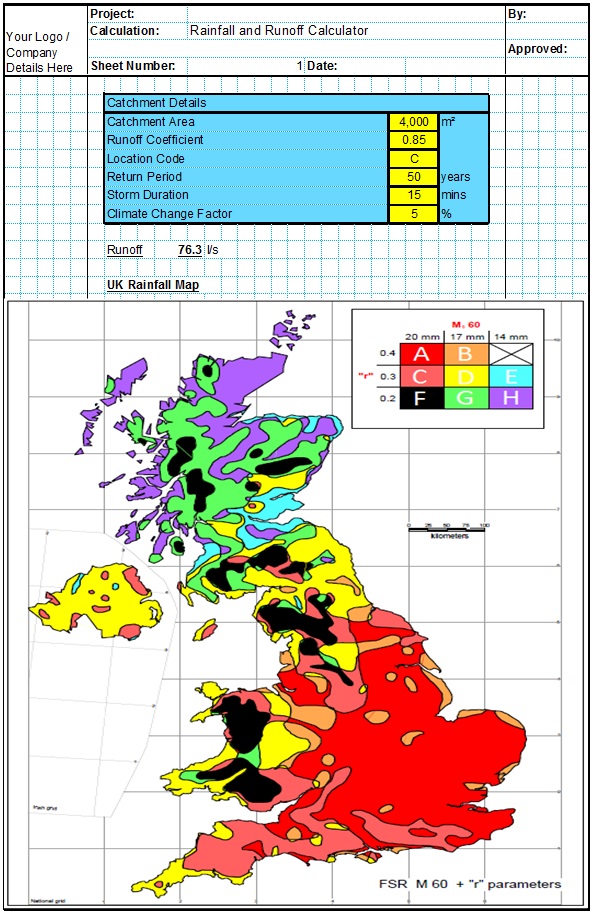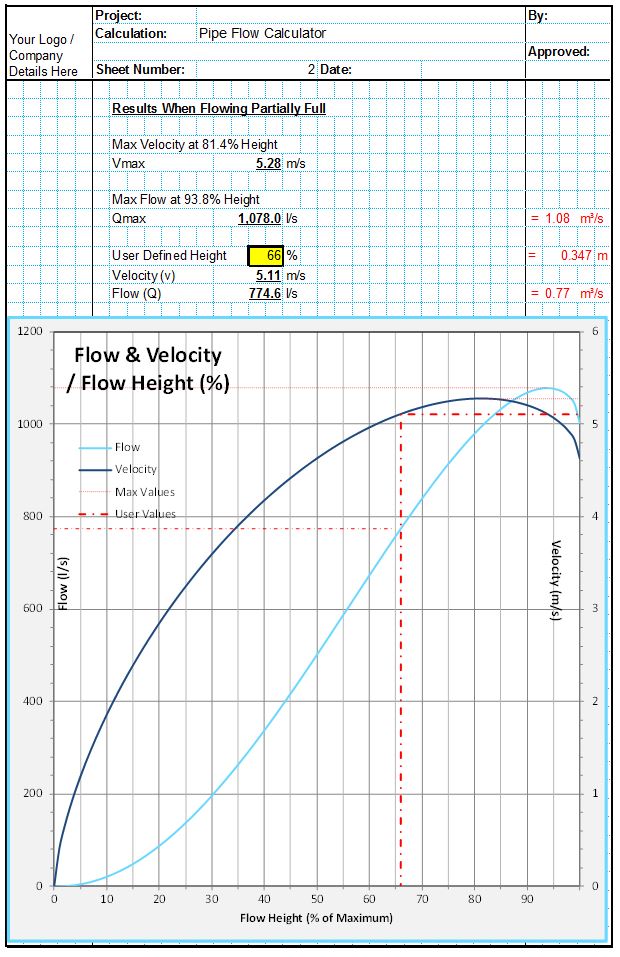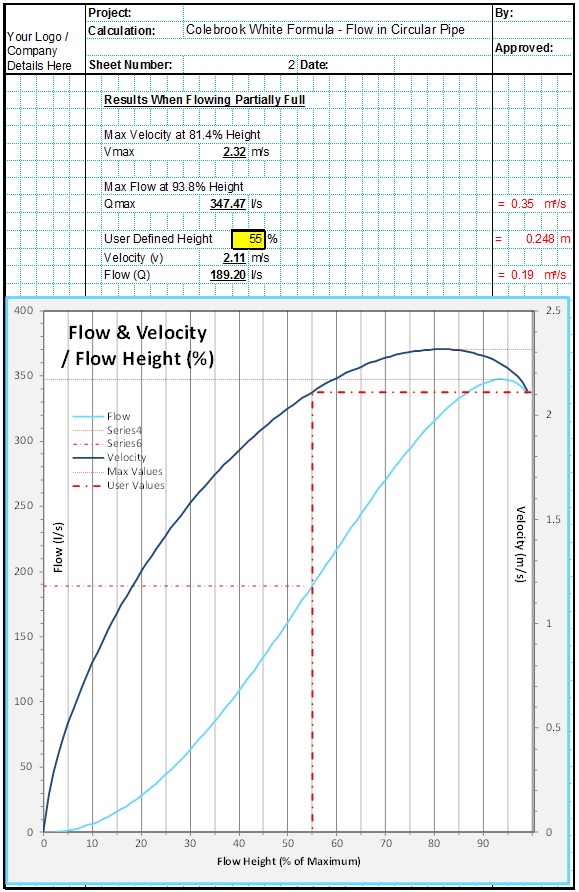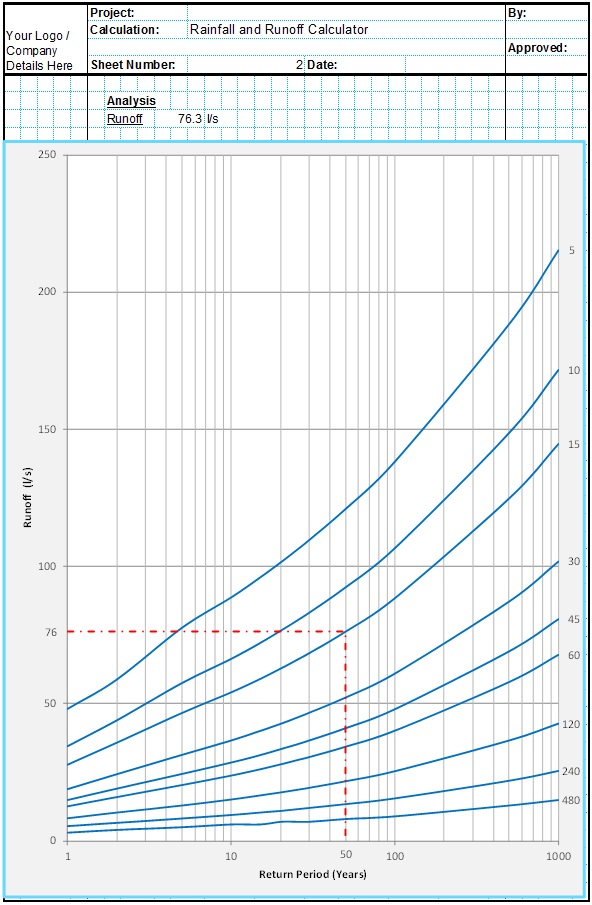Ductile iron pipe design is based on the principle that buried ductile iron pipes will behave in a semi-rigid manner. Semi-rigid pipes are those defined as those displaying both rigid (concrete) and flexible (steel) pipe behaviors. They will both deflect and settle in response to loading. In practice this usually includes only ductile iron pipes and thick walled steel pipes. According to BS EN 1295-1 semi-rigid pipes are designed as though they lie somewhere in between flexible and rigid depending on the stiffness of the pipe-soil-surround system. Effectively the calculations for rigid and flexible pipes are both undertaken, then the chosen loading is determined from the pipe-soil stiffness factor which evaluates as a percentage how rigid the pipe system is.
Pipe-Soil Stiffness Factor (n) in Ductile Iron Pipe Design
The pipe soil stiffness factor evaluates whether the pipe will behave in a mostly rigid fashion, a mostly flexible fashion or somewhere in between the two. It does this by evaluating the relative stiffness of the ductile iron pipe and the surrounding soils using the below equation. This value is between 0 and 1.0 with 0 indicating a totaling rigid pipe, and 1.0 indicating a totally flexible pipe. If the ductile iron pipe is much more stiff than the soil this value will tend towards 0. If the soil is much stiffer than the pipe this value will tend toward 1.25, though 1.0 is the maximum used for ductile iron pipe design.
Modulus of Elasticity (E)
This is the elasticity of the ductile iron pipe material. Typical values often used for design of ductile iron pipes are around 165,000MPa, and for steel are around 290,000MPa.
Second Moment of Area (I)
The second moment of area of the ductile iron pipe wall or inertia can be determined as per the previous section.
Mean Pipe Diameter (D)
This is the average diameter of the ductile iron pipe. The CivilWeb Buried Pipe Design spreadsheet determines this value by simply averaging the nominal and outside diameters as input by the designer.
Effective Overall Modulus of Soil Reaction (E’)
This is the overall stiffness modulus for the combined pipe-bedding-soil system as described in the steel pipe design section of this site.
Deflection Lag Factor (DL)
The deflection lag factor is included to allow for the time dependent nature of soil consolidation. This can be estimated from the table in BS EN 1295-1 which for ease of reference is reproduced below.
Vertical Soil Pressures (Pe) in Ductile Iron Pipe Design
The vertical soil pressures for ductile iron pipes are essentially calculated in the same manner as for rigid and flexible pipes, with the pipe-soil stiffness factor determining exactly where between the two values is most appropriate. Similar to rigid concrete pipes, either the narrow or wide trench conditions can be critical.
Wide Trench or Embankment Conditions
After the pipe-soil stiffness factor is calculated, now the vertical soil pressure can be calculated using the below equation;
Soil Unit Weight (γ)
The soil unit weight is simply the density of the backfill material. If this is known this value can be input directly. For general purposes a value of 19.6kN/m3 is often used relating to a soil material with a density of around 2,000kg/m3. If a lower value is used this must be justifiable in that it is certain to occur consistently and over a large proportion of the pipe.
Outside Diameter of the Pipe (Bc)
The outside diameter of the ductile iron pipe dictates the width of the column of soil acting on the pipe. The exact outside diameter of the pipe is often unknown at the time of design, however it can be estimated from the nominal diameter based on manufacturer’s information such as those included below.
Backfill Load Coefficient (Cc)
The backfill load coefficient is calculated in the same way as for rigid concrete pipes as described in that section of the site. However, the settlement deflection ratio (rsd) is determined using the below equation;
This alteration corrects the backfill load equations to accommodate either rigid or flexible behavior depending on the value of the pipe-soil stiffness factor. If n is 0 the settlement deflection ratio is taken as 0.7 which is a typical value for concrete pipe design. If n is 1 the settlement deflection ratio is 0 which leads to a Cc value of 1.0. This turns the above equation into the simple geostatic pressure as used in the design of flexible pipes.
Narrow Trench Conditions
Similar to rigid pipes, the narrow trench condition may be appropriate. This can be determined using the below equation. Again these values are calculated in the same manner as for rigid pipes except the introduction of the pipe-soil stiffness value corrects the equation to suit either rigid or flexible pipe conditions.
Effective Width of the Trench (Bd)
The effective width of the trench being considered is the width of the trench at the top of the pipe as described in the concrete pipe design section of this site. Minimum trench widths must be observed.
Narrow Trench Fill Load Coefficient (Cd)
The narrow trench fill load coefficient is calculated as in the concrete pipe design section of this site.
Conclusion
The design backfill load is determined by the lower of the wide and narrow trench conditions, as amended to suit the pipe-soil stiffness factor.
Total Loads Acting on Ductile Iron Pipes
The total load acting on the pipe can now be calculated with the backfill load added to the concentrated surcharge loads and internal water loads calculated as in that section of the site.
Ovalisation in Ductile Iron Pipe Design (Pipe Ring Deflection) (Δ/D)
The first design check is on the ovalisation or deflection of the ductile iron pipe ring under load. This is calculated in a similar way as the flexible steel pipes described in that section of the site. The only alteration is a change in the long term deflection lag coefficient to allow for inclusion of the pipe-soil stiffness factor (n).
Once the long term and short term ovalisations are calculated, these are simply compared with the maximum allowable deflection as input by the designer. Guidance on typical maximum allowable deflections for steel pipes is given in that section of the site. Typical values of around 5% are often used in design though these may change if coatings are used.
BS EN 545 includes guidance on acceptable deflection for ductile iron drainage pipes. These vary from 1.45% for 100mm diameter pipes up to around 4.0% for large diameter drainage pipes. A table from BS EN 545 is shown below. Note that these allowable ovalisation values are derived from the maximum allowable stress, so if the maximum ovalisation value is not exceeded then the bending stress check below is generally not required.
Pipe Bending Stress (σbs)
The bending stress of the ductile iron pipe must be maintained at a low enough level to prevent the pipe from breaking. The bending stress is determined from the ovalisation using the below equation;
Modulus of Elasticity (E)
This is the elasticity of the ductile iron pipe material. Typical values often used for design of ductile iron pipes are around 165,000MPa, and for steel are around 290,000MPa.
Pipe Wall Thickness (t)
This is the thickness of the pipe wall. The CivilWeb Buried Pipe Design Spreadsheet calculates this value simply as the pipe external diameter minus the internal diameter.
Mean Pipe Diameter (D)
This is the average diameter of the pipe. The CivilWeb Buried Pipe Design spreadsheet determines this value by simply averaging the nominal and outside diameters as input by the designer.
Ovalisation (Δ/D)
The ovalisation is the deflection of the pipe ring under load as described above.
Strain Factor (Df)
The strain factor takes account of the pipe stiffness in calculating the bending stress. The strain factor can be taken from the below table taken from BS EN 1295-1. To use this table first the pipe stiffness (EI/D3) must be calculated. The CivilWeb Buried Pipe Design spreadsheet calculates this value automatically and interpolates a strain factor value from the above table.
Maximum Allowable Bending Stress
The maximum allowable bending stress on the pipe will depend on the pipe material and any strengthening hoops or similar. The maximum allowable ovalisations are often derived from the allowable bending stresses so adherence to the maximum ovalisations given in the standards usually ensures that the bending stress is acceptable.
The maximum bending stress for ductile iron is given as 500MPa in BS EN 545, though it also recommends a factor of safety of 1.5 on the material strength leading to a maximum allowable bending stress of 330MPa.
Get your copy of the CivilWeb Buried Pipe Design spreadsheet including full ductile iron pipe design now for only £20.
Or why not bundle the CivilWeb Buried Pipe Design spreadsheet with our Pipe Flow Calculator for only £5 extra?
Or save £50 by buying our full Drainage Design Suite including all our drainage design spreadsheets.
Download Free Trial Version
To try out a fully functional free trail version of this software, please Click Here or enter your email address below to sign up to our newsletter.

